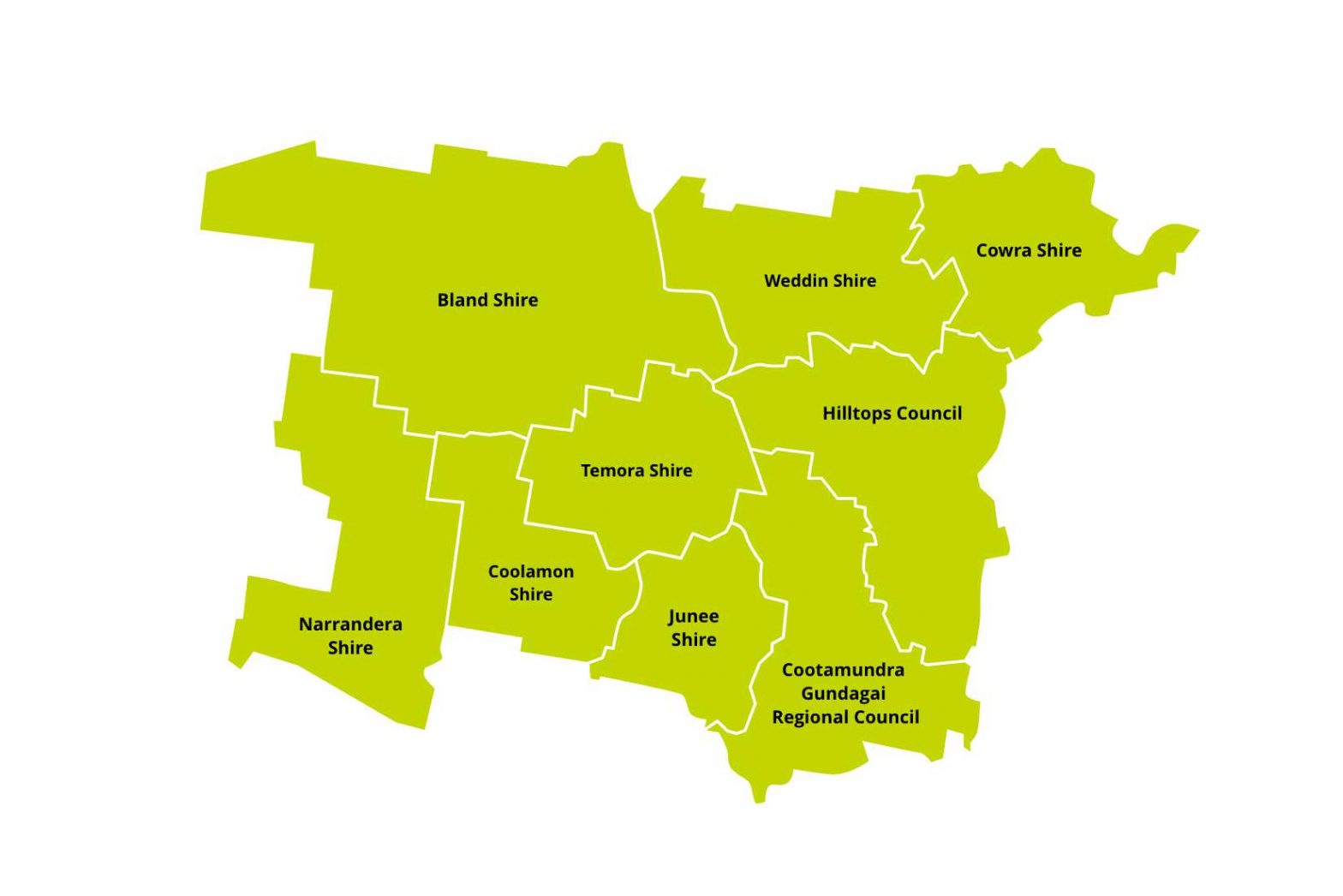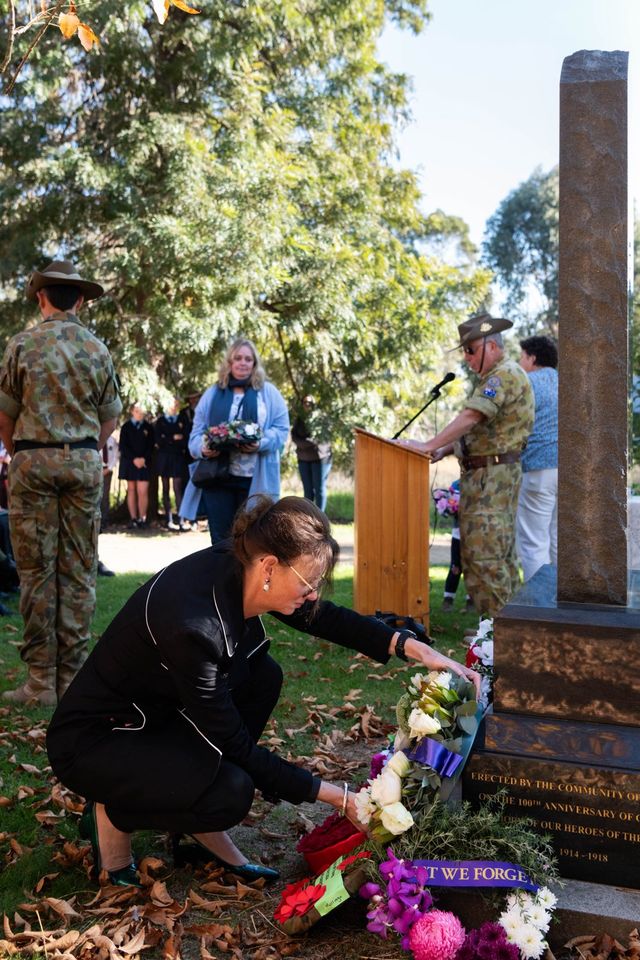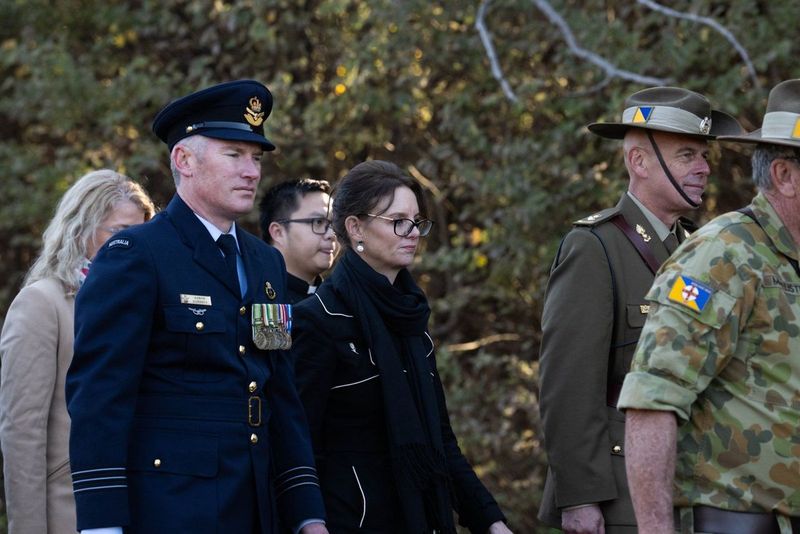An original ANZAC
George Elliott of Gundagai spent his 21st birthday on the Gallipoli peninsula, Turkish fire raining down upon him and his fellow ANZACs in the 6th Light Horse Regiment.
The scenes he saw and experienced, detailed meticulously in his diary, would be hard to even imagine for many men his age today.
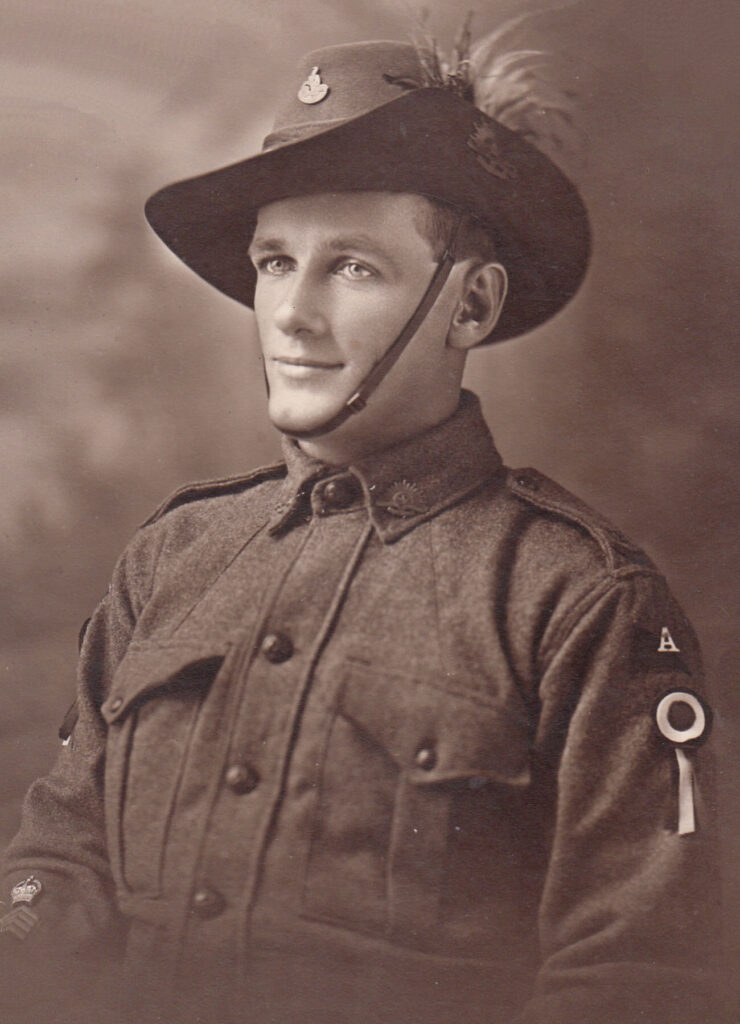
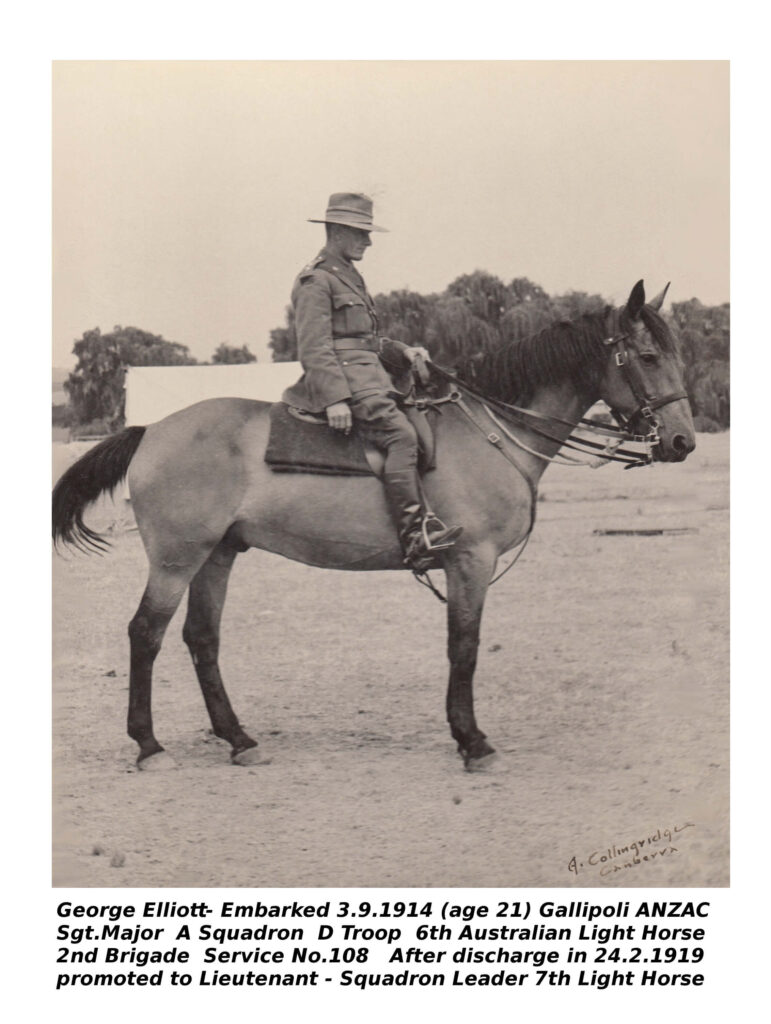
He celebrated his milestone birthday just before the August Offensive, which tragically saw 2,277 Australians killed at Lone Pine. George fought among many men from his home town. Tragically, one of the lives lost at Lone Pine was Robert Sullivan of the 1st Lighthorse, whose brother Patrick Sullivan owned the Gundagai Independent.
Enduring the battle for eight months, Elliot was evacuated shortly after for Egypt when the siege became deadly.
Later reunited with horses he took part in the battles of Romani, Oghrtina, El arish and Gaza, and numerous others, his service contributing to the eventual capture of Palestine.
Elliot’s diary tells of death all around, with friends and soldiers felled in almost every entry.
After his discharge in February 1919, his service continued. He was appointed Lieutenant on March 1, 1922, taking charge of the 7th light horse for over three years. He was instrumental in keeping the movement alive.
George visited Gallipoli during the 50th anniversary of the campaign, returning home with pine seeds and planting them at what is now the Gundagai Anzac Grove. He was suffering from liver cancer and sadly passed away just six weeks later, but his contribution lives on.
The silent service of Junee’s Lucy Barrow
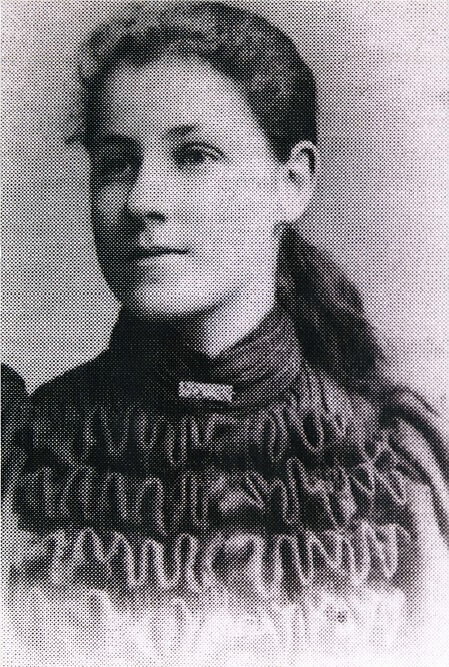
Lucy Barrow was 37 when she applied to join the Australian Army Nursing Service (AANS) on 16th April, 1915. Her parents lived at “Bundaleer”, Junee.
Instead of the AANS, Lucy was accepted to serve with the Queen Alexandra’s Imperial Nursing Service Reserve.
Lucy was a highly qualified and experienced nurse and was recognised for her theatre skills which were indispensible in the field.
Commencing duty on June 15, Lucy served at No 17 General Hospital, Alexandria then four and a half months on a hospital ship in the Aegean while conflict raged at Gallipoli.
She then joined No 15 General Hospital (Alexandria), spending most of her time in the operating theatre.
In January 1917, Lucy was awarded the Australian Royal Red Cross and on May 9, 1918, was transferred to Salonika, Greece, to serve with the 25th Casualty Clearing Station where she was awarded the Greek Medal of Military Worthiness, Class 3. From there, she was sent to Constantinople, Turkey, as matron and that year was awarded the Royal Red Cross as well as being mentioned in Dispatches.
Lucy returned to Australia in October, 1920 and became matron of Hutchinson Hospital, Gawler in South Australia before joining the nursing staff at Keswick Repatriation Hospital, where she served for 14 years.
Her brother Percival served with the Australian 6th Light Horse Regiment in WW1 and fought from Egypt through Palestine to Beersheba and Gaza. Sadly, Percy was killed in action at Jemmama near Gaza on November 8, 1917. He was buried in the nearby Gaza War Cemetery.
Lucy Barrow died in Adelaide on May 10, 1946 and was buried in the AIF Cemetery within the West Terrace Cemetery, Adelaide.
At her funeral, Matron L.A Provis wrote of Lucy’s humility and strength.
“A retiring personality, Sister Barrow did not refer under any circumstances to her experiences. Only recently I learned after all these years of her wonderful work abroad. She was on the staff at the Repatriation Keswick Hospital for 14 years until retirement. What a record! And yet, who knows and who cares? Just another old Army nurse,” she said.
Ganmain’s “Flying Twins” (AKA the Flying Farmers)
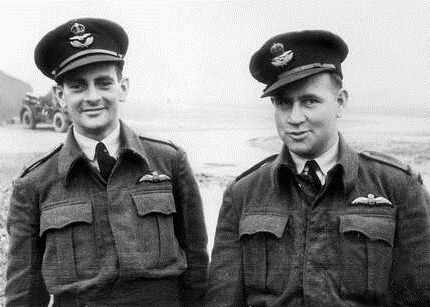
William (Bill) Lloyd Brill was born in 1916 in Ganmain. Bill attended school locally at Derain, and then at Yanco Agricultural High School. He took up farming near Grong Grong in partnership with his brothers and served two years in the Militia before enlisting in the Citizen Air Force, Royal Australian Air Force.
Arthur Doubleday was born in 1912. He attended the one-teacher school at Methul, before he too went as a boarder to the new Yanco Agricultural High School. In September 1939 he enlisted and in 1940, being passed medically fit despite a “dicky knee”, and he too joined the Air Force reserve.
Arthur and Bill knew of one another. Both played Football, but in different leagues, so it was unlikely that they ever met on the field as opponents.
Bill and Arthur were called up for service in November 1940. When Arthur got on the train at Coolamon on Armistice Day, Bill was already on board. The two young men travelled together on the train to Sydney, and on the bus to Bradfield Park Initial Training School.
Following basic training at Australian bases including Narrandera, they sailed for No 3 Service Flying Training School at Calgary, Canada. Brill and Doubleday learnt to fly the twin-engined Anson, marched in the parade at the Calgary Stampede, graduated with almost equal marks, and were awarded their wings and commissioned as pilot officers.
Brill and Doubleday were to join the elite in Bomber Command. They were very different from most Australians selected for aircrew training. They were older, they were country boys, and they had completed just three years of high school.
By February 1942 Brill and Doubleday were flying Wellingtons from Molesworth, Yorkshire, across the English Channel into enemy territory. It was less than 16 months since they met on the train that took them to Sydney and Initial Training School. By the end of the war, the men had each completed over fifty missions.
In the Australian casualty lists of World War II, two figures stand out: the 8000 who died as prisoners of the Japanese, and the 4000 who died in Bomber Command. Somehow, Brill and Doubleday flew against the odds and returned to Australia.
Both men were decorated with DSO (Distinguished Service Order), DFC (Distinguished Flying Cross), and MID (Mentioned in Dispatches) medals. When they came home in 1945, Arthur moved into civil aviation, was appointed Regional Director for Queensland in the Department of Civil Aviation, completing his career as Director of the Department of Transport in New South Wales until retiring in 1977.
Bill Brill came home and married his fiancée school teacher in the Ganmain Methodist church, and stayed in the RAAF. Tragically, though the war could not separate them, Group Captain Brill died of a heart attack in 1964 at just forty-eight years old.
Mick Makeham, last surviving veteran to fight the French in Syria
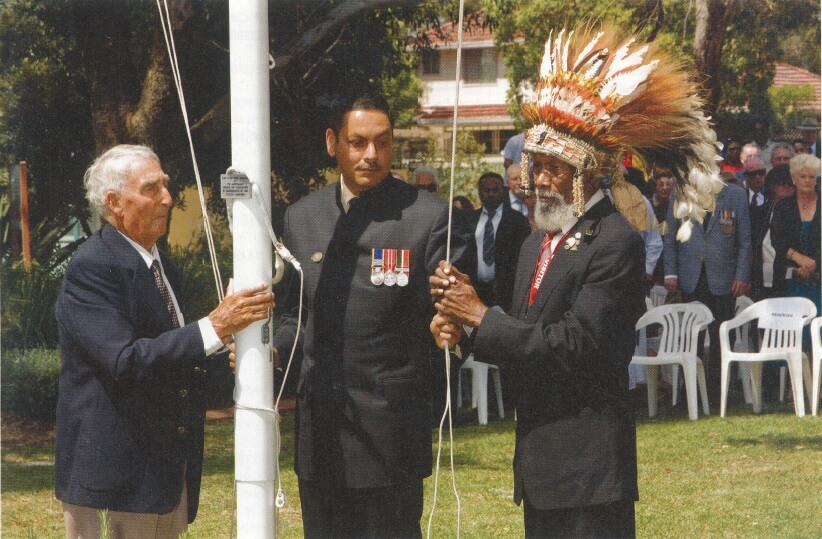
After serving in the Gundagai Troop of the Australian Light Horse, 21-year-old Milton Alfred (Mick) Makeham of Nangus enlisted in the 2nd AIF on May 17, 1940.
Training took place up to the time Mick’s unit, the 2/31st Battalion embarked on the Dutch liner “Slamat” on September 14, 1940, bound for the Middle East.
After the fall of France, British Prime Minister Churchill became concerned that French controlled Syria would be taken over by Germany. Although the French were not Britain’s enemies, Churchill ordered an invasion of Syria, expecting that Vichy French forces would not resist.
In a piece of little-known history, Australian units were ordered to participate including Mick’s unit and unexpectedly found very strong resistance from the French, including Foreign Legion regiments.
An armistice was signed on July 11, 1940.
On return to Australia in 1942, the Kokoda Track called and Mick’s Battalion was present when Japanese forces retreated from Kokoda Village on November 2.
He was wounded on November 11 as the battle for Oivi-Gorari commenced and evacuated for treatment.
In September, 1943, Mick and a dozen others were flown behind Japanese lines to an abandoned airstrip in the Markham Valley. There they spent ten days in reconnaissance of Japanese defensive positions, far from assistance should the enemy spot them, then walked back to Australian forces, a gruelling task.
The intelligence gathered assisted in the clearing of Japanese forces from Lae and the Markham and Ramu Valleys following which the 2/31st returned to Australia in January, 1944.
The battle for Balikpapan in Borneo in July, 1945 was his last action in WW2.
At 99 years of age, Mick Makeham is the last veteran who served with the 2/31st in the Middle East and well remembers his almost six years in the 2nd AIF and the mates with whom he served.
